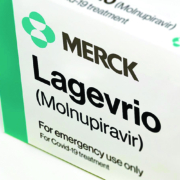What lifescience companies should expect in 2023
What lifescience companies should expect in 2023
By Michelle Gyzen
Prediction No. 1
Regulatory affairs teams within lifescience organizations possess a unique opportunity to drive connected intelligence across the enterprise to support critical operations relating to drug development, safety, and regulatory verticals. Historically, regulatory affairs teams have used stand-alone applications that exist in silos and cannot access outside data from separate safety, regulatory, and quality systems.
However, lifescience organizations that want to succeed and innovate in 2023, as well as open the doors to future innovations that can directly impact market success and revenue capture, must deploy cross-functional integration between regulatory and other verticals within biopharma (safety, clinical, quality, etc.). Cross-functional integration between verticals creates better synergy and value along the continuum of the drug development life cycle.
Today’s regulatory technology solution uses center around gathering data to analyze and use in submissions. However, the use of AI for regulatory operations in life science is about to explode in 2023. Regulatory technology of the future will do much more than gather data – it will also use smart automation and predictive analytics to provide intelligent, actionable insights. Instead of simply inputting data for reporting purposes, intuitive solutions will guide the entire regulatory process while reducing associated risks. Connecting historical data, typically stored in silos, is the big caveat to achieving this next step in AI-driven regulatory capabilities. That’s where cross-functional integration comes in to provide massive amounts of data for regulatory analysis.
By starting cross-functional integration with regulatory affairs and drug development, organizations can immediately see the impact of eliminating data silos and effectively managing valuable data across the enterprise. In addition, the comprehensive nature of now-connected data sources will enable more in-depth artificial intelligence-driven analysis – leading to valuable, actionable insights that improve not only RADDS operations but enterprise success as a whole.
Prediction No. 2
Regulatory agencies around the world have implemented significant requirement changes throughout the past few years. From shortening research-to-market timelines to combat the spread of COVID then removing those pandemic measures so that vaccines and treatments can get full approval, to enabling remote clinical trials for research of other new drugs during the pandemic. At the same time, regulatory agencies and lifescience companies around the world are increasingly using more data and AI-driven analysis than ever before to fuel regulatory submissions and drug research.
In 2023, we’ll start to see more lifescience companies – big and small – working directly with regulators to increase efficiency in the drug research and approval process. To keep up with future regulatory changes, and make sure those changes address the needs of patients, the market, and technology, both sides of the regulatory discussion (life science companies and regulators) must collaborate. More integrated approaches to regulation development and strategy will not only speed the pace of innovation within the industry, it will help regulators and companies better understand the use and capabilities of regulatory technologies and make new treatments safer.
 |
Michelle Gyzen is senior director, strategic solutions, Regulatory Affairs & Drug Development Solutions, IQVIA. |










